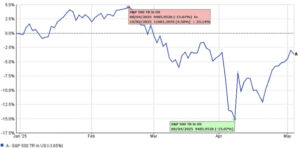U.S. crude oil prices plunged more than 4% on Sunday after OPEC+ announced a second consecutive production increase, signaling a significant shift in global supply dynamics.
U.S. crude futures dropped $2.49, or 4.27%, to $55.80 per barrel after markets opened. Brent crude, the global benchmark, fell $2.39, or 3.9%, to $58.90. Crude prices have now declined over 20% this year.
The latest agreement by OPEC+, led by Saudi Arabia, brings an additional 411,000 barrels per day to the market in June, mirroring the increase previously announced for May. Combined, the two-month boost exceeds 800,000 barrels per day.
This volume far surpasses earlier expectations, which had estimated June’s increase to be around 140,000 barrels per day. OPEC+ appears to be accelerating production to meet fiscal targets, or in response to diverging views on global demand outlook.
The rise in supply comes at a time when demand is under pressure due to ongoing trade tensions. New tariffs introduced by the U.S. have sparked fears of a potential recession, which could reduce energy consumption and weigh further on prices.
April marked the steepest monthly loss for oil since 2021. Oilfield service firms like Baker Hughes and SLB are adjusting their plans, anticipating weaker investment in exploration and production due to the current price environment.
Baker Hughes noted during its April 25 earnings call that a combination of oversupply, geopolitical uncertainty, and reduced capital spending—especially in regions like Mexico and Saudi Arabia—could limit global upstream activity.
Meanwhile, major oil companies like Chevron and ExxonMobil reported a decline in first-quarter profits compared to the same period last year, largely due to lower oil prices.
Though markets have reacted strongly to the production news, it remains to be seen whether current price levels will stabilize. Some forecasts now expect U.S. crude to average around $59 per barrel in 2025, with Brent at approximately $63.
With supply climbing and demand outlook softening, the energy market faces heightened volatility. Traders and observers are closely watching OPEC+ actions, global inventory data, and the evolution of global trade dynamics.




